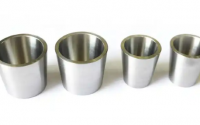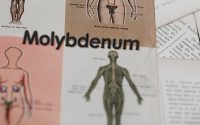Guardian of Women’s Health: Molybdenum Target Inspection
- What is Molybdenum target inspection?
Molybdenum target inspection, also known as mammography, is a non-invasive procedure for the diagnosis of breast diseases such as breast mass and calcification. Moreover, the examination can accurately determine and identify the calcification points of breast lesions that cannot be distinguished by color ultrasound. The molybdenum target inspection has the advantages of convenient and quick inspection operation, small radiation amount, and clear imaging. It should be noted that lactating women and young women are not suitable for mammography. In addition, because the examination may impose a burden on the body and the mind, the person to be examined should first relax and then actively receive an inspection.
- What is the “molybdenum target” in the molybdenum target inspection?
Molybdenum targets, also known as molybdenum sputtering targets, are an important part of the mammography system and their importance can be seen in the name of the inspection. Molybdenum sputtering targets can form thin films on a variety of substrates, so its application is not limited to the medical field, but also the electronics field. These films can be widely used in electronic components such as phones, sensors, semiconductor devices, plasma display panels, thin film solar cells, field emission displays, thin film semiconductor tubes-liquid crystal displays (TFT-LCDs), and field effect transistor gates.
- Does long-term makeup cause breast cancer?
There is currently no scientific evidence to prove that cosmetics (including estrogen) are indirectly related to breast cancer. However, cosmetics containing too much estrogen can easily lead to an increase in cancer cells. But don’t worry too much, having cancer cells does not mean that you will definitely get cancer.
- Does breast hyperplasia increase the chance of breast cancer?
First of all, we must know that breast hyperplasia is neither a tumor nor an inflammation. Its essence is endocrine disorders. Breast hyperplasia is not a terrible disease, most patients with hyperplasia of mammary glands will naturally cure after menopause, that is to say, breast hyperplasia has no direct relation to breast cancer. However, a small number of breast hyperplasia can develop into dysplasia. Moderate and severe breast atypical hyperplasia may turn into breast cancer after several years, also known as precancerous lesions. So it is necessary to take breast hyperplasia seriously.
- Is self-test useful?
Although studies have shown that self-testing does not reduce the mortality of breast cancer, it can increase the awareness of breast protection among females. After all, I am not a professional gynecologist, and the best prevention method is to check with a specialist on a regular basis.
Who is at high risk for breast cancer?
1. There are mammary ducts and lobular atypical hyperplasia;
2. Frequent use of products containing hormones;
3. Have a family history of breast cancer;
4. Excessive obesity;
5. Not giving birth, late birth (first birth after 35 years old) or not breastfeeding;
6. Early menstruation (less than 12 years old) or late menopause (later than 55 years old);
7. Accept high levels of ionizing radiation, especially due to other diseases that cause the chest to receive excessive radiation.
- Are young women suitable for screening with mammography?
If a young woman asks a doctor in a breast department, “Doctor, give me a molybdenum target checklist”, the doctor may not directly agree. As I mentioned before, young women are not suitable for mammography because their breast tissue is richer and denser, which is easy to cover the tumor. If young women get the examination, the breast gland on the obtained image will show a group of “white shadows”. Even if there is a suspicious symptom, it will not be clear because of the cover of “white shadow”. Therefore, under normal circumstances, doctors do not recommend female patients under the age of 45 to receive mammography. On the one hand, this is to prevent patients from receiving invalid examinations with poor examination results, and on the other hand to avoid patients receiving meaningless X-rays.
- Is the prevalence of breast cancer high among young people?
Although you may often see news of breast cancer in young women on the Internet, this does not mean that the age of high-risk breast cancer is decreasing. According to relevant data, the current high incidence of breast cancer is still concentrated between 45 and 55 years old.
- Excessive fatigue can lead to breast cancer recurrence?
Maintaining a healthy and regular lifestyle is a commonality against all diseases. For the patient, a temporary recovery does not mean that it is a lifelong cure. Too much work is definitely bad for the body. In addition, there is no doubt that you should love sports and keep in a good mood!
For more information, please visit https://www.samaterials.com/.
Related Posts

Molybdenum Crucibles in Crystal Growth: Pioneering Semiconductors

Molybdenum: A High-Temperature Material

